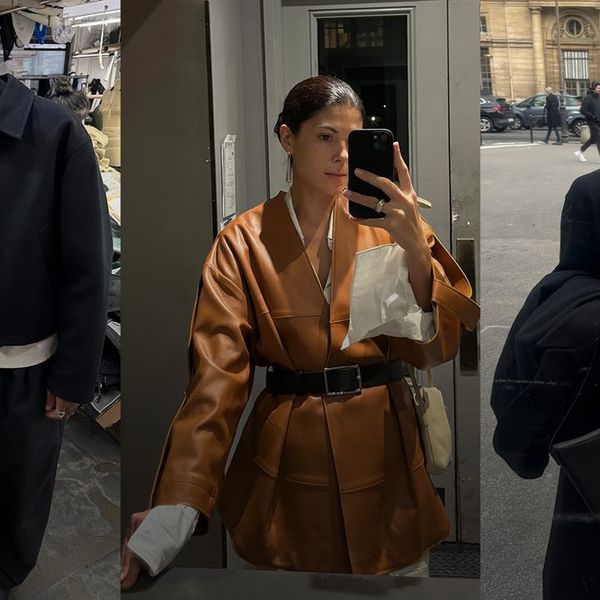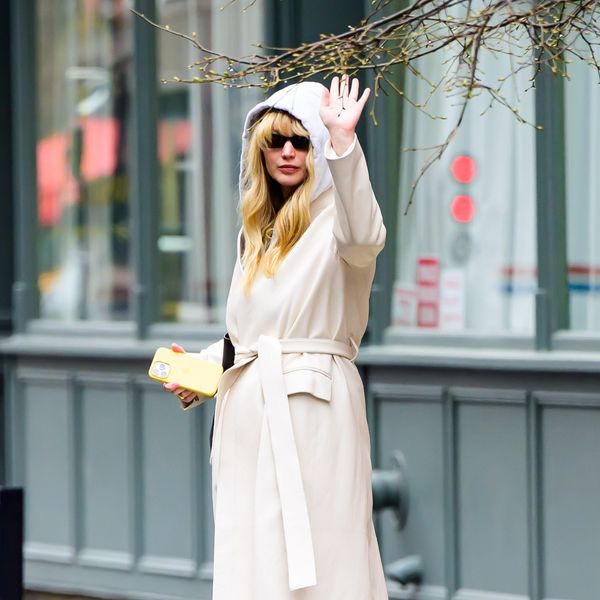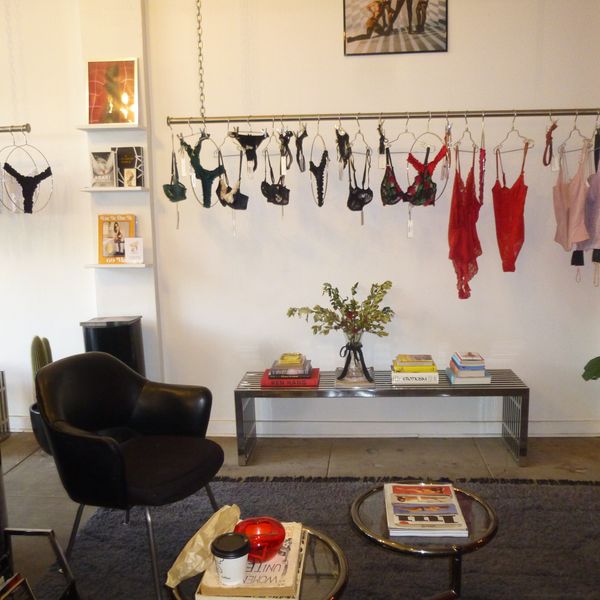Allina Liu Dresses The Final Girl
The designer proves that femininity can be dangerous, erotic, and deeply subversive all at once.

Look at designer Allina Liu’s work, and at first, you may not see the influence of her Chinese upbringing in monolithically white upstate New York. It's not on the nose, like a Mandarin collar or dragon embroidery, but hints at a more subtle, unexpected element of being raised in a strict immigrant household: sexual repression.
Liu is a womenswear designer based in New York City and has previously designed for The Row, Thakoon, Rebecca Taylor, and J.Crew before launching her eponymous, sustainable New York City-based brand in 2015. A week before her label’s first runway show on Sept. 14, the CFDA chose her as a finalist for their third annual Genesis House AAPI Design + Innovation Grant, solidifying herself in the world of capital ‘F’ fashion.
“The CFDA grant is something I've been working towards since the beginning of my career. I've been doing this for over 10 years," she tells Coveteur. "I've been in the industry, not just my own brand, but as a professional designer, for a really long time."
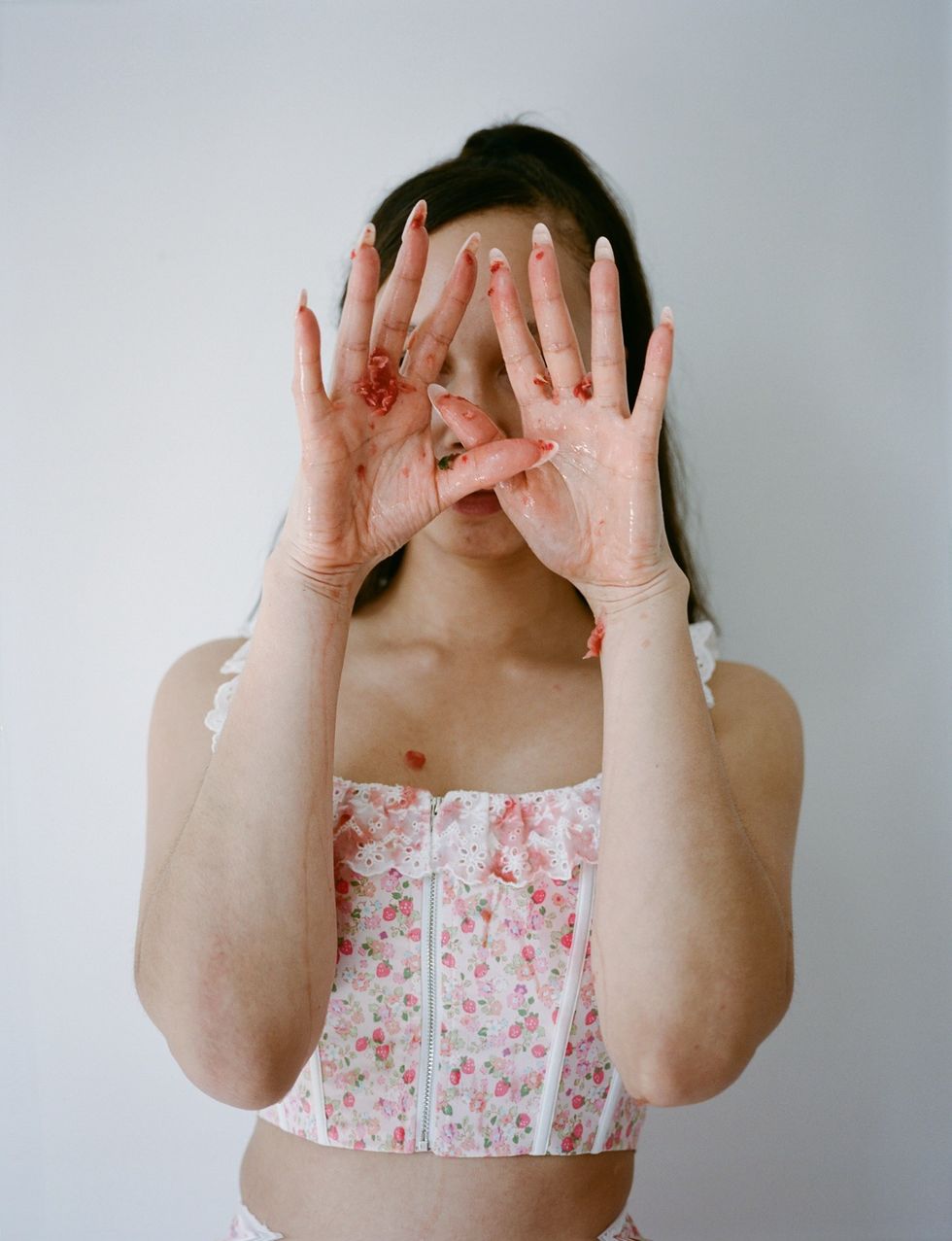
@allina.liu
Her first runway collection, entitled “Who’s To Say That Love Needs To Be Soft And Gentle,” was inspired by the 2002 film Secretary starring Maggie Gyllenhaal and James Spader. “Secretary isn't a horror movie, per se, but there are some very viscerally horrific things in it. [The film] definitely touches upon a lot of dark aspects about humans and human interactions,” Liu says. “It's about a girl who needs guidance.”
The recurrence of orchids is a nod to Spader’s character, who has an affinity for the labia-like flower. “Because of the orchids. I kept thinking about Georgia O'Keeffe, and that translated into vaginas,” she says. “Then I was thinking about The Big Lebowski when Maude says, ‘You know, the very word itself is enough to turn some men off—vaginas.’”
As a result, she created a watercolor print based on O’Keeffe’s famous yoni-cally charged work, to construct A-line dresses, corseted tops, and even a windbreaker. A constant trim has been meticulously sewn into what looks like an innocent parenthetical shape, but is, as you guessed it, vaginas.

Karla Tomanelli
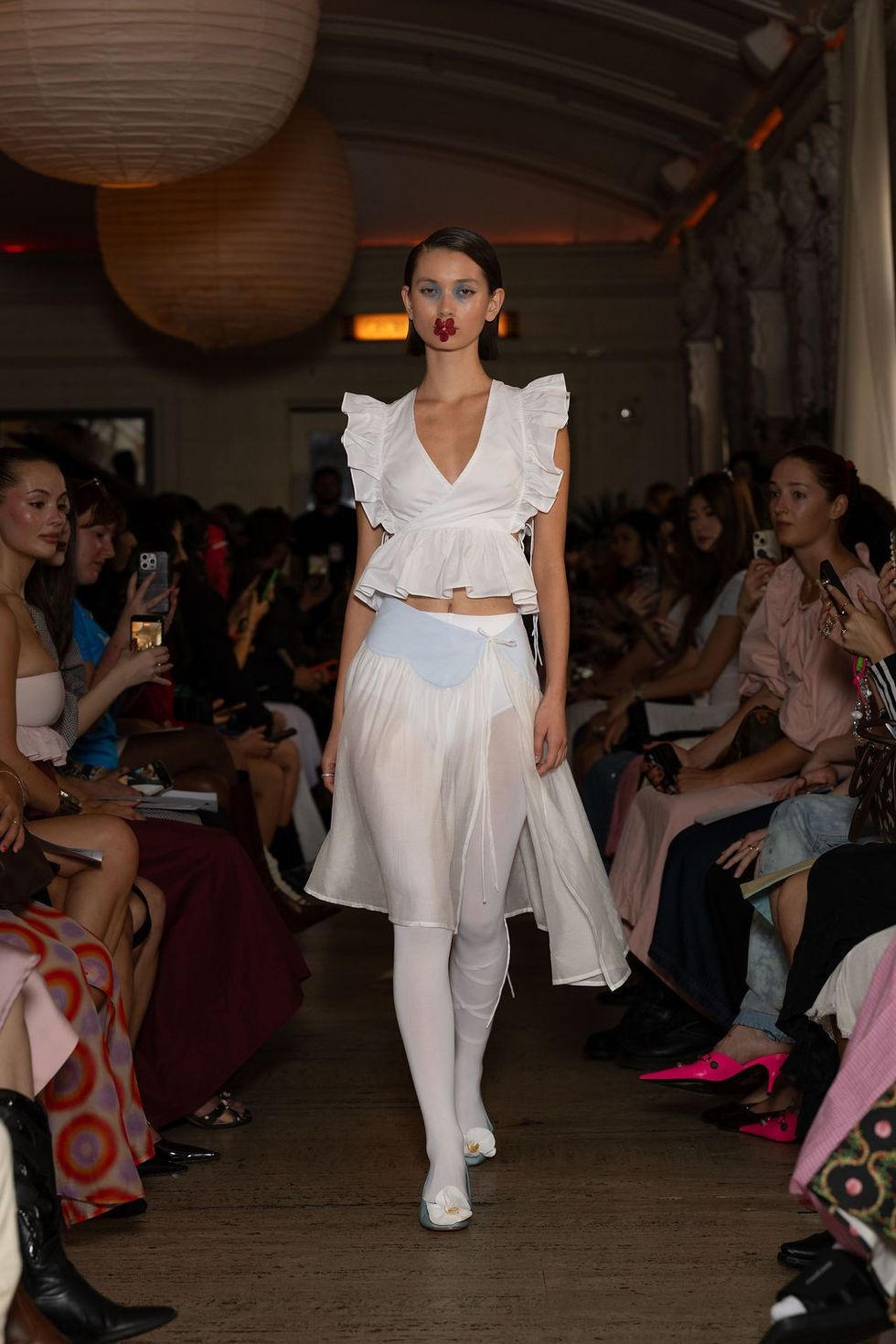
Karla Tomanelli
For her Spring 2026 runway show, models walked down the runway to the sound of a live pianist at the Freehand Hotel with tiny red orchids placed on their mouth, a reference to another favorite film of Liu’s, Silence of the Lambs. Flower motifs were ever-present on a soft, silky blue cape, sheer, sexy black top, and more. Hair looked like whips from the back, tied up with a leather-like material. Clothing moved.
Her work carefully balances a dichotomous coin: On its underbelly side is horror, sex, and languishing lust—in film, in womanhood, in design—inspired by Ren Han, 17th-century Dutch portraiture, and Nobuyoshi Araki. But at face value, her work appears feminine, with girlish ruffles and bows galore. It's a point of frustration when her work is often compared to fellow designer Sandy Liang.
“I've a lot of respect for Sandy as a designer. But just because we're similar in age, both Chinese, and dabble in femme, [comparisons] seem borderline racist, to be honest with you," she says candidly. "I've seen a lot of white designers do things that look alot like her [designs] and they're not getting these comparisons."

Karla Tomanelli
In writing her application for the CFDA program, she described how being AAPI has affected her journey as a designer. Raised in a monolithic community, her experience being Chinese was so difficult and othering that in high school, she told people she was white.
“As much as I want to come out of the gates and be like, ‘Oh, I always loved being Chinese. I always loved being Asian,’ that just wasn't the fucking truth,” Liu says. “Looking back, it just kind of shows you how deep-seated the internal hatred was and how much that systemic [racism] got to me. So it took a really long time to figure out who I was as a person.”
And, what is more cathartic than an Asian American woman exploring and expressing her sexuality on her own terms? To shed off the male gaze that often perpetrates East Asian women as submissive?
Her feminine aesthetic is a bit of a red herring for what are also salacious designs based on bondage and intimacy. Signature straps, ties, and corsets evoke traditional BDSM restraints. Smocking, too, is an unexpected element of sweet restriction. The kink world and the subculture of BDSM brought Liu so much satisfaction and autonomy, especially in a household where sex was so taboo that to this day she still doesn’t know the Mandarin word for sex.
“I just realized that I kept putting straps on all my shit. And if you come to my apartment, we have a lot of ropes. [BDSM] has bled its way into my work,” Liu says. “Then, I put two and two together that restriction versus release is a massive part of my personal life. It sounds like a douchey thing to say, but as an artist, I want that to come through my work too. I don't want you to just be wearing cute clothing.”

Karla Tomanelli
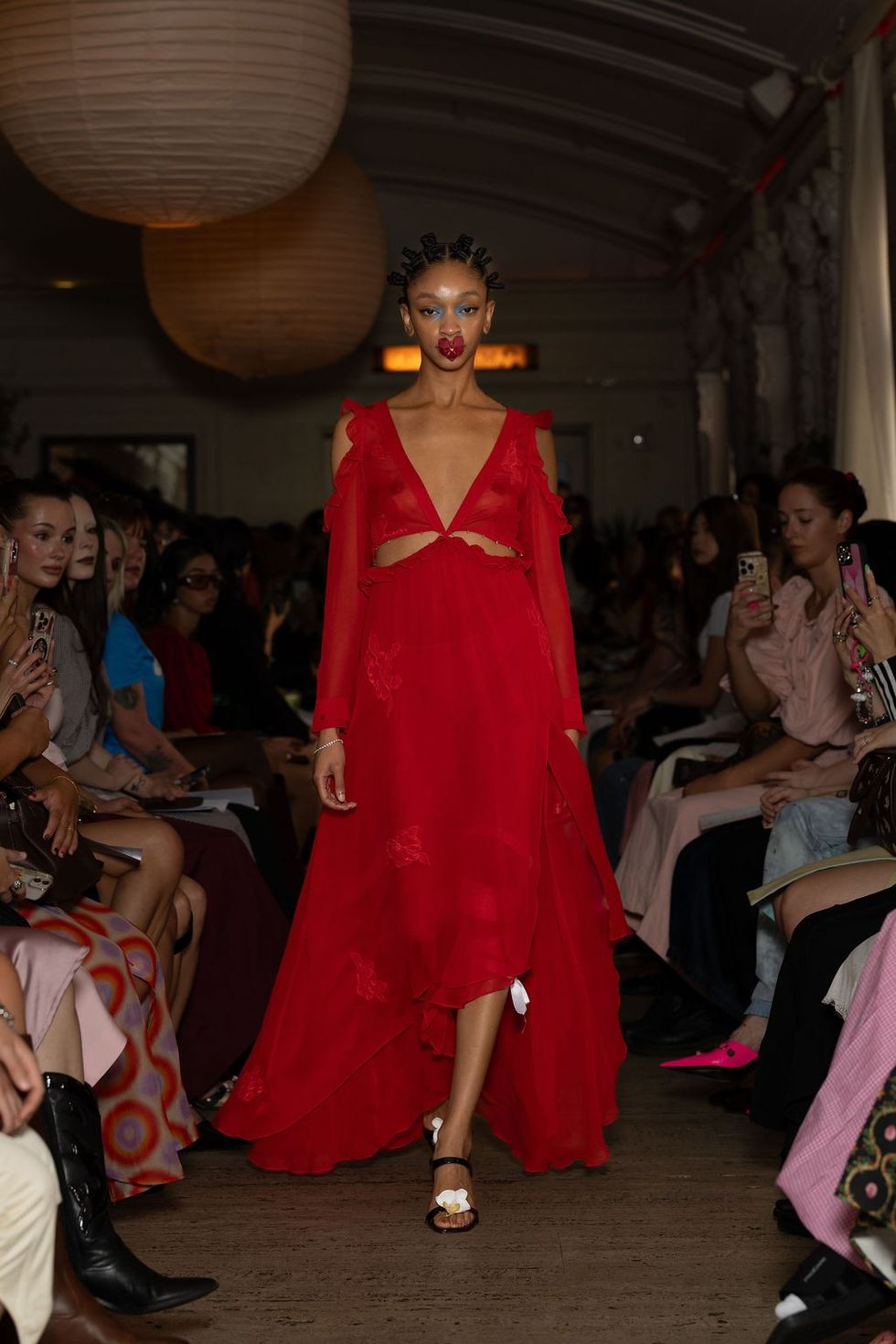
Karla Tomanelli
There is no film genre where themes of repression, emancipation, and sex stand out more than horror, another source of design titillation for Liu. Actress Mia Goth’s double feature in X and Pearl shows the perils of restraining a woman’s right to be horny, whether you’re a preacher’s daughter gone porn, or your husband has gone off to war and can't bang without his heart giving out. In It Follows, an ever-present, stalking supernatural entity is passed on to a young woman through rape and exists as an allegory for trauma. And who can forget Teeth, a film about a teenager who discovers teeth guarding her vagina from sexual assault?
Past presentations have leaned into theatrical concepts. In FW24, red shibari rope was woven between each model's braids to represent the thread the ancient Greek Moirai, the Fates, cut to determine a person’s lifespan. In SS25, her models stood in concentric cultish circles around a contortionist with their faces uncanny, mouths smiling, and eyes always staring, reminiscent of the cult folk-horror film, Midsommar.
While getting a nod from the CFDA should mediate anyone's imposter syndrome, Liu is open about still feeling a bit anxious, a bit scared, but gritting down as she always does for the road ahead—like any other Final Girl worth their salt would.

